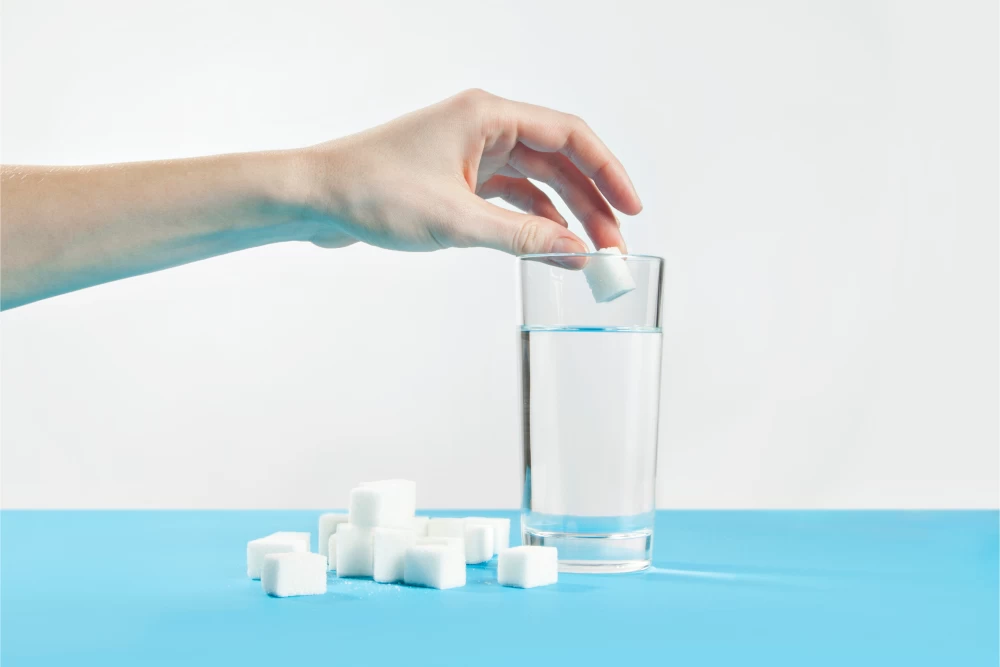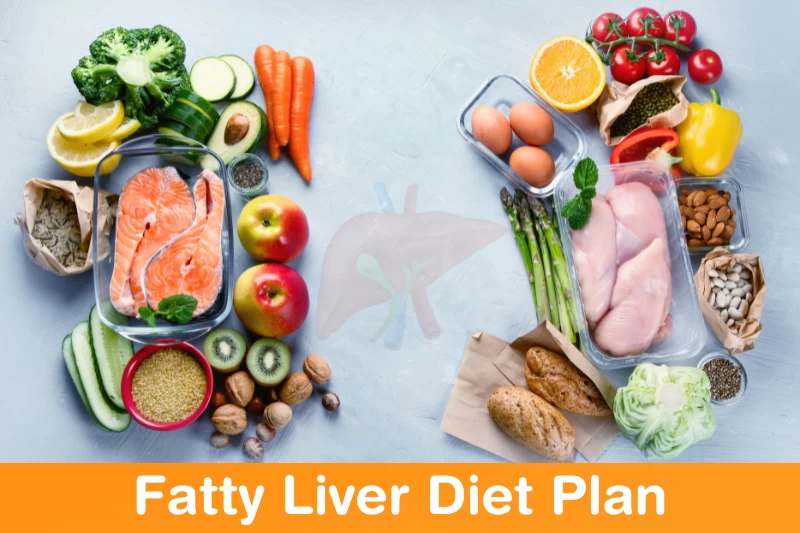
- 19th March 2023
Table of Contents
What is fatty liver disease?
Fatty liver disease, also known as hepatic steatosis, is a condition in which there is an abnormal accumulation of fat in the liver. This excess fat can cause inflammation and damage to the liver over time, leading to a range of health problems. The most common causes of fatty liver disease are excessive alcohol consumption and obesity. However, recent studies have shown that high sugar intake can also contribute to the development of this condition. When we consume too much sugar, our bodies convert it into fructose. The liver is responsible for metabolizing fructose and converting it into glucose, which our cells can use for energy. However, when we consume too much sugar, the liver becomes overloaded with fructose and starts storing it as fat instead. This excess fat can build up over time and lead to fatty liver disease. It's important to note that not all types of sugars are created equal when it comes to their effects on the liver. While natural sugars found in fruits and vegetables are fine in moderation, added sugars in processed foods and drinks should be limited as much as possible. By reducing your overall sugar intake and making healthier food choices, you can help protect your liver from damage and lower your risk of developing fatty liver disease.
Risk Factors: High sugar intake
High sugar intake has been identified as a major risk factor for fatty liver disease, also known as hepatic steatosis. When the liver is unable to metabolize excess sugar, it converts the glucose into fat and stores it in the organ. Over time, this can lead to an accumulation of fat in the liver cells, which impairs its ability to function properly. Moreover, high sugar intake can also contribute to insulin resistance and inflammation in the body. Insulin is a hormone produced by the pancreas that helps regulate blood sugar levels. When there is an excessive amount of sugar in the bloodstream, the pancreas produces more insulin than necessary. This leads to insulin resistance over time, which can increase inflammation throughout the body. In addition to contributing to fatty liver disease and other health issues such as obesity and type 2 diabetes, high sugar intake has been linked to an increased risk of heart disease and certain cancers. To reduce your risk factors associated with high-sugar diets; consider limiting or eliminating processed foods from your diet and consuming foods that are low in added sugars such as fruits and vegetables.
Symptoms: Fatigue, Weight Gain
Fatigue and weight gain are two common symptoms that can be indicative of various health conditions, including fatty liver disease. This condition is characterized by the accumulation of fat in liver cells, which can lead to inflammation and scarring over time. One of the main contributing factors to fatty liver disease is excess sugar consumption. Consuming a diet high in sugar can cause insulin resistance, which means that your body's cells become less responsive to the hormone insulin. As a result, your pancreas has to produce more insulin to regulate blood sugar levels. This excess insulin can promote the buildup of fat in the liver as well as other tissues throughout the body. Over time, this can lead to complications such as type 2 diabetes and cardiovascular disease. If you are experiencing fatigue and weight gain along with other symptoms such as abdominal pain or swelling, it is important to speak with your healthcare provider about testing for fatty liver disease. Reducing your intake of added sugars and focusing on a healthy diet rich in whole foods like fruits, vegetables, lean proteins, and healthy fats may also help prevent or manage this condition.

Diagnosis: Blood Tests, Imaging
Blood tests and imaging are essential diagnostic tools for determining the presence of fatty liver disease. One of the most commonly used blood tests for diagnosing this condition is the liver function test. This test measures levels of certain enzymes that are produced by the liver, such as alanine aminotransferase (ALT) and aspartate aminotransferase (AST). Elevated levels of these enzymes may indicate liver damage or inflammation, which can be caused by fatty deposits in the liver. Imaging techniques like ultrasound, computed tomography (CT), and magnetic resonance imaging (MRI) can also be used to diagnose fatty liver disease. These imaging tests allow doctors to see detailed images of the liver and detect any abnormalities, such as fat accumulation or scarring. Additionally, non-invasive methods like transient elastography can be used to assess the stiffness of the liver tissue, which can help determine if there is fibrosis or cirrhosis present. In conclusion, blood tests and imaging techniques play a critical role in diagnosing fatty liver disease. Early detection is key to preventing further damage and complications associated with this condition. If you suspect that you may have fatty liver disease or are at risk for developing it, talk to your healthcare provider about getting tested today.
Treatment: Change in Diet, Exercise
One of the main causes of fatty liver disease is consuming too much sugar. Therefore, changing your diet can be an essential part of treating this condition. A low-carb, high-fiber diet that includes healthy fats and proteins can help reduce inflammation and improve liver function. It's also important to avoid processed foods and sugary drinks. Exercise is another significant factor in treating fatty liver disease. Regular physical activity has been shown to help reduce insulin resistance, which can lower the risk of developing non-alcoholic fatty liver disease (NAFLD). Exercise can also improve blood flow to the liver, helping it to work more efficiently. It's important to note that changes in diet and exercise should be made in consultation with a healthcare professional. They can provide guidance on specific dietary requirements and recommend safe levels of physical activity based on individual needs and medical history.
Prevention: Reduce Sugar Intake
Excess sugar consumption can lead to the development of fatty liver disease, a condition where fat accumulates in the liver. When we consume too much sugar, our liver converts it into fat and stores it. Over time, this excess fat buildup can cause inflammation and scarring in the liver, leading to fatty liver disease. To prevent this condition from developing or worsening, it is important to reduce your sugar intake. This means cutting back on sugary drinks like soda and juice as well as limiting your intake of processed foods that are high in added sugars. Instead, focus on consuming whole foods like fruits and vegetables that contain natural sugars but also provide essential nutrients for overall health. By making small changes to your diet and reducing your sugar intake, you can protect yourself against fatty liver disease and other health issues associated with excessive sugar consumption. Start by reading food labels carefully and choosing products with low amounts of added sugars or opting for healthier alternatives altogether. Making these changes now will benefit both your short-term and long-term health goals.
Conclusion
In conclusion, maintaining a healthy liver is crucial for overall health. Fatty liver disease is becoming increasingly prevalent due to the abundance of sugar in our diets. Reducing sugar intake can help prevent and even reverse this condition. It's important to read food labels and be aware of hidden sugars in processed foods. Making small changes such as replacing sugary drinks with water or herbal tea can have a significant impact on liver health. Additionally, incorporating more whole foods into your diet, such as fruits and vegetables, can provide essential nutrients to support liver function. In summary, taking care of our livers by reducing sugar intake and consuming a balanced diet is vital for maintaining optimal health. By making these changes, we not only benefit ourselves but also contribute to preventing the growing prevalence of fatty liver disease in society today.
